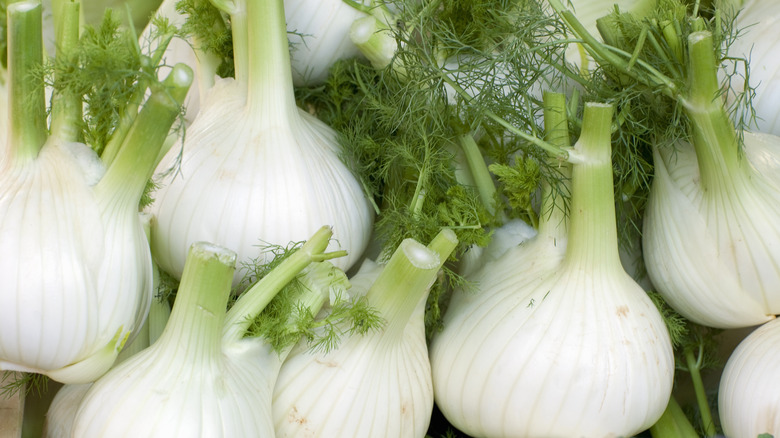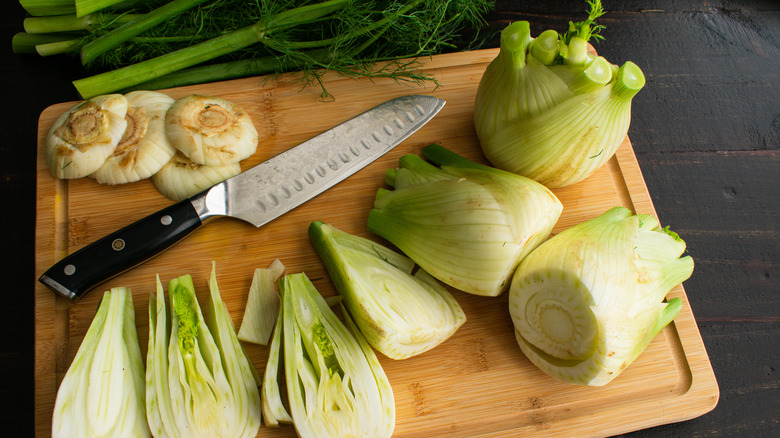The Fennel Cutting Mistake You Need To Stop Making
When it comes to preparing vegetables, there are a few essential steps that go into it. Scrubbing away any dirt, peeling or removing any inedible pieces, chopping and cutting per the recipe needs, and so on. However, certain vegetables, like fennel, can have an additional step due to their distinct features. Oftentimes, when purchasing fennel, the wispy fronds and celery-like stalks are included. And if they are, your cooking will certainly be rewarded.
The absolute best way to cut fennel truly depends on what you're making, but there is one thing to keep in mind. When cutting fennel, save the fronds and stalks for uses beyond what a recipe may call for. From using the herby fronds as a garnish for your dish to adding the stalks to homemade broths, stocks, and soups, using the whole fennel in totality will add a unique freshness and vibrancy to your cooking. So if you've been making the mistake of throwing out the tops of this earthy vegetable, you may want to reconsider your cutting process.
A whole new world of flavor
At first, it may be intimidating, but buying fennel like a veggie pro is easier than you might think. When selecting fennel, look for a firm, white bulb with bright green stalks and dill-like fronds attached. This provides a 3-for-1 deal, meaning that there are a variety of uses for all three sections of the vegetable. And not only are you opening up a world of flavor in your kitchen, but you're also fostering a taste-not-waste cooking environment.
With its crisp and distinct licorice-like taste, fennel is the crunchy ingredient that makes tuna salad stand out and shines in this citrusy orange-fennel salad. Its appearance in cold dishes that need a textural layer is iconic, but fennel is also uniquely delicious when braised; its natural sweetness comes alive. The herbaceous fronds can be added to tomato sauce for a burst of bright flavor or used as a garnish in soups, salads, and grilled meats. The woody stalks might not be something to eat whole, but they can be a great addition to stocks, broths, soups, sauces, and more, offering a similar flavor and texture to celery.

